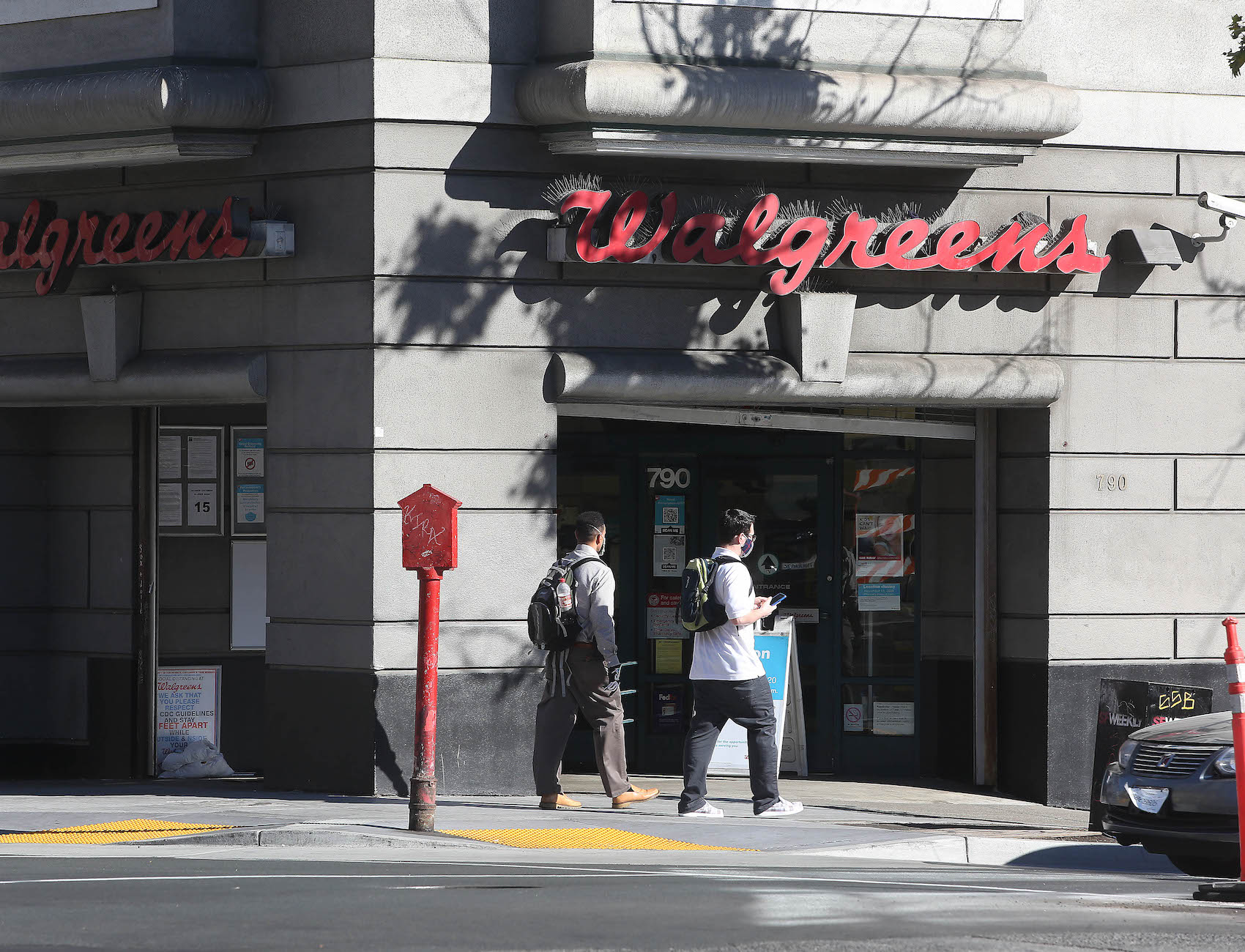

Photo by Lea Suzuki/The San Francisco Chronicle via Getty Images.
By David M. Greenwald
Executive Editor
San Francisco, CA – Last June the voters of San Francisco ousted reform DA Chesa Boudin. A big part of it was the perception that crime was out of control and the fears spawned that the DA was not doing enough to combat the crime.
While a high-profile murder by a parolee sparked a recall wave, and concerns about open air drug markets particularly in the Tenderloin played to these fears, it was the retail crime wave that seemed to embody everything that had gone wrong.
Never mind that it seemed to be a statewide phenomenon tied to COVID and the struggling economy. Never mind data that seemed to undermine the arguments that there was a big surge.
In 2021, Walgreens, claiming a continued string of retail theft, announced it was closing five stores in San Francisco.
At the time, the Vanguard and other outlets noted that data released by the police in San Francisco did not support the explanation.
Now Walgreens is admitting that they “may have exaggerated the threat of organized retail theft” according to an article Friday in the San Francisco Chronicle.
“Maybe we cried too much last year,” Walgreens Chief Financial Officer James Kehoe said in an earnings call, during which he acknowledged that losses from “shrinkage” had become “more manageable.”
While data did not support the claim “that unchecked theft had forced it to close five stores” fears of retail theft were a big part of the recall effort against Boudin.
The Chronicle notes, “Although some city leaders raised doubts about Walgreens’ messaging, and a growing perception of lawlessness in downtown San Francisco, officials also faced mounting pressure to crack down on petty crime.”
The Chronicle added, “Some observers of the retail sector who spoke with The Chronicle on Thursday expressed bafflement and skepticism that theft at Walgreens had abated, at a moment when representatives from other stores are imploring city officials for more police officers. At least one expert saw the numbers as a possible sign of success for Walgreens.”
The notion that progressive policies were driving crime rates was undermined by comparative statistics available to the voters at the time of the recall.
Data consistently showed that places like San Francisco and Los Angeles, led at the time by progressive prosecutors, actually had smaller increases in crime including homicide than places like Sacramento and Oakland, led by supposed tough-on-crime DAs.
Not only was it true that crime was increasing across the board, it was also true that crime in areas with more traditional prosecutors were increasing faster than areas with progressive prosecutors.
Critics also pointed out the role that media coverage played in fanning the flames. One tweet showed a number of spectacular headlines in the Chronicle.
“SF Tenderloin’s spectacular demise into crime, poverty after years of prosperity” from November 4, 2022. “Walgreens to close 5 more SF stores, citing rising costs of retail crime” from October 13, 2021. “In SF’s Hayes Valley, merchants are arming themselves with Tasers amid fear over break-ins” from October 28, 2022. “SF leaders to clamp down on Union Square retail theft after last year’s viral crime spree” from November 15, 2022.
In a NY Times article yesterday, they reported comments by Kehoe which indicated “the company had ‘probably’ spent too much on security measures and that it might have mischaracterized how much theft took place in its stores.”
They added, “It was a remarkable admission, retail experts said. Walgreens and other retailers have in recent years complained about an increase in shoplifting, inflaming political debates about crime.”
But others point out that it’s also a remarkable admission by the NY Times and SF Chronicle.
Scott Hechinger, the former Brooklyn Public Defender, tweeted, “Once again, the NYT reports on how propaganda was used to foment panic over crime, w/o acknowledging their role in unquestioningly spreading this very propaganda.”
He added, “@nytimes: Remember when you failed to ask basic questions or talk to experts about the Walgreens shoplifting lies?”
David Menschel, an attorney and reformer, tweeted, “The New York Times fomented a moral panic around these thefts and now, after its reckless reporting led to the recall of the DA of San Francisco, THE SAME NEWSPAPER ERASES ITS OWN COMPLICITY IN THESE FALSEHOODS.”
It is all pretty remarkable, especially when you consider the fact that the data at no point really vindicated the notion that progressive prosecutors, who still represent only a fraction of the state and nation, were somehow driving the COVID crime wave.
The fact that the struggles in San Francisco have continued—maybe even worsened since Boudin was ousted—seem to play into that.
A headline from KTVU yesterday in San Francisco read, “Four people were shot in San Francisco’s Mission neighborhood early Friday morning, according to police.”
That led John Hamasaki, who ran this fall for the DA and finished second to Brooke Jenkins, to quip on Twitter, “The post-DA recall crime wave is out of hand.”
Responding to the news of Walgreens, Hamasaki added, “Oh really now. More and more it feels like the whole DA recall was a scam by moderate dems to get a ‘city family’ crony in office.”
In some ways it always felt that way, as the crime data never seemed to justify the drastic actions taken by the voters, with prompting from the media and power establishment.


In other words Walgreens admitted to being a bunch of liars.